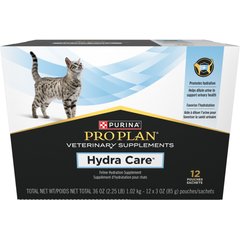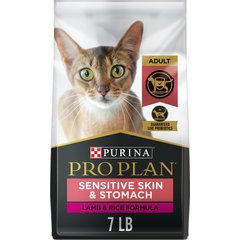5 Surprising Ways Cats Get Sick
The Last Thing You Expect Your Vet to Say
by Jessica Vogelsang, DVM
Cats are known for their stoicism in the face of illness, so it’s not unusual for felines to be in a fairly advanced stage of disease by the time they make it in to the veterinarian’s office. We vets have our usual list of suspects when it comes to common diseases in cats, such as kidney disease, hyperthyroidism, and diabetes, but we also need to be thinking about some of the more unusual diagnoses we come across in our feline patients. Here are five of the more unusual—or at least, unexpected—diagnoses I have made in my practice.
Baylisascaris
Commonly referred to as “raccoon disease,” Baylisascaris procyonis is a roundworm that infects many animals, including birds, rodents, dogs, cats, and people. It is quite abundant in the raccoon population; infected raccoons shed eggs through their feces into the environment. Cats are infected either by ingesting the tissue of an infected animal, or by coming into contact with eggs that are out in the dirt where cats are walking and scratching.
After ingesting Baylisascaris eggs, the roundworm larvae migrate through the body, causing damage along the way. These larval migrans can wind up in the GI tract, the eyes, or the nervous system, causing a variety of symptoms, from GI upset to seizures. The parasite can be treated once diagnosed, though the damage to the body may persist. Because the parasite is also infectious to humans, prompt treatment is essential.
Related
Diagnosing and Treating Raccoon Parasite Infection
5 Surprising Ways Cats Get Sick
 Feliway Optimum Enhanced Calming 30 Day Diffuser for CatsRated 3.9 out of 5 stars1590Reviews$29.99Chewy Price
Feliway Optimum Enhanced Calming 30 Day Diffuser for CatsRated 3.9 out of 5 stars1590Reviews$29.99Chewy Price Purina Pro Plan Veterinary Diets FortiFlora Powder Probiotic Digestive Supplement for Cats, 30 countRated 4.7 out of 5 stars5622Reviews$30.99Chewy Price
Purina Pro Plan Veterinary Diets FortiFlora Powder Probiotic Digestive Supplement for Cats, 30 countRated 4.7 out of 5 stars5622Reviews$30.99Chewy Price Purina Pro Plan Veterinary Diets Hydra Care Liver Flavored Liquid Supplement for Cats, 3-oz pouch, case of 12Rated 4.4 out of 5 stars2622Reviews$14.99Chewy Price
Purina Pro Plan Veterinary Diets Hydra Care Liver Flavored Liquid Supplement for Cats, 3-oz pouch, case of 12Rated 4.4 out of 5 stars2622Reviews$14.99Chewy Price Purina Pro Plan Adult Sensitive Skin & Stomach Lamb & Rice Formula Dry Cat Food, 7-lb bagRated 4.6 out of 5 stars2242Reviews$28.08Chewy Price
Purina Pro Plan Adult Sensitive Skin & Stomach Lamb & Rice Formula Dry Cat Food, 7-lb bagRated 4.6 out of 5 stars2242Reviews$28.08Chewy Price
Taurine Deficiency
My first taurine deficiency patient was a cat whose owner, thinking that she was treating her cat to an extra-luxurious life, fed her cans of tuna fish and nothing else. She was unaware that this unbalanced diet was causing serious harm to her cherished pet.
Taurine is an essential amino acid, playing an important role in heart and eye health, but cats are unable to synthesize taurine on their own. They must obtain taurine through their diet.
When cats are deprived of taurine, they can experience severe symptoms such as blindness and dilated cardiomyopathy, a form of heart failure. If caught early enough, getting back on track with a balanced diet can reverse the symptoms of illness. For this reason, I caution any owners who are interested in a home cooked diet to do so under the guidance of a veterinary nutritionist who can ensure the food you are preparing is completely balanced.
Related
Blindness
Cats are renowned for the keen senses, so we don’t often think of them as being prone to such significant losses to their senses as deafness or blindness. Nonetheless, cats can and do experience vision loss for a variety of reasons: injury, cataracts, glaucoma, cancer, hypertension, and even infectious disease such as FIV and FeLV.
A sudden onset of blindness is a medical emergency as it is often caused by retinal detachment, which may be reversible if treated immediately. Just as common, however, is a gradual vision loss that might not be apparent as it develops over time. As vision is slowly lost, cats can compensate with their other senses, resulting in more subtle behavioral changes than what we see when a cat loses vision suddenly. Either way, a veterinarian can quickly assess whether or not a cat is visually impaired.
Because blindness is so often secondary to another disease process it becomes essential to ascertain the cause to ensure your cat is able to function at maximum health.
Related
How to Treat Feline Immunodeficiency Virus (FIV)
FELV – Similar But Not Identical To FIV
Feline Tooth Resorption
Sometimes even a really excellent physical examination and basic bloodwork leaves us at a loss as to the cause of a cat’s lethargy, a situation that can be extremely frustrating for both owners and doctors. In one such case, the only hint I had that something was wrong was a teeny hole in one of a patient’s teeth. When his mouth was x-rayed, we found that despite the mouth appearing fairly normal from the outside, he was suffering from some very painful tooth root resorption below the gum line. The roots were almost entirely eaten away.
The cause of tooth resorption is not known, but it is thought to occur in over half of adult cats. A tooth with a normal appearing crown can be almost completely obliterated below the gum line, so a regular examination isn’t enough to diagnose the condition. Because oral x-rays are not always taken during regular dental cleanings, many of these cases may go undiagnosed. Removal of the damaged tooth, root and all, is the only way to eliminate the pain many of these affected cats experience.
Related
Diet and Dental Health in Cats
10 Signs of Gum Disease in Cats
5 Steps to Save Your Cat's Teeth
When the Cat is Just ‘ADR’
Treating felines has its challenges. Some of the most common presenting complaints at the veterinarian are nonspecific: vomiting, changes in litterbox behavior, and “ADR”—the nebulous but very common “ain’t doing right.”
A wide range of diseases manifest in some very nebulous ways, which is why your veterinarian requires an in-person examination to pinpoint the problem. A careful history of the problem, a thorough physical exam, and appropriate diagnostic tests are the triad on which we rely to figure out the exact problem your cat is experiencing and, more importantly, how to manage it.
Related
The Physical Exam: What to Expect at the Veterinarian's Office